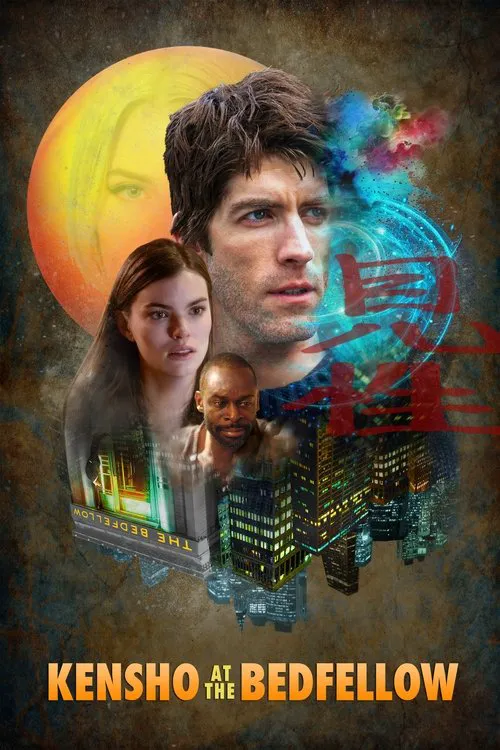Kensho at the Bedfellow

Plot
Kensho at the Bedfellow, a film that boldly navigates the complexities of grief, love, and self-discovery, weaves a poignant narrative that traverses the tumultuous terrain of a NYC playwright's life. This captivating story revolves around the protagonist, an unnamed character, as he grapples with the suffocating weight of loss following his sister's untimely passing. The initial scenes of the film plunge the viewer into the midst of the protagonist's despair, as he wanders aimlessly through the city, desperately seeking solace in a world that seems devoid of meaning. His life, once a carefully constructed facade of creative success and intellectual superiority, has been shattered by the brutal reality of mortality. As he stumbles through his days, oscillating between numbness and raw emotion, it becomes increasingly evident that the protagonist is a man lost, adrift in a sea of uncertainty. It is within this labyrinthine landscape that the protagonist encounters a world beset by the hedonism and decadence of the NYC libertine lifestyle. His odyssey becomes entwined with a cast of colorful characters who inhabit the city's underworld, individuals consumed by their base desires and existential dread. The protagonist, too, becomes increasingly drawn to this hedonistic world, lured by its promise of fleeting escapism from the crushing weight of his grief. Amidst this whirlwind of excess, the protagonist becomes reacquainted with a childhood love, a woman who represents a bygone era of innocence and hope. Her reentrance into his life serves as a catalyst for a transformative journey of self-discovery, one that propels the protagonist toward an existential awakening of profound implications. As the narrative unfolds, the protagonist embarks on a perilous journey of self-exploration, navigating the treacherous landscape of his own psyche. Through a series of increasingly intense and unsettling encounters, he confronts the darkest recesses of his own nature, surrendering to the abyss of his own uncertainty. It is through this cathartic process that he gains insight into the fragility of human existence and the impermanence of life. Throughout this odyssey, the film masterfully evokes a visceral sense of disorientation and dislocation, underscoring the sense of existential dislocation that pervades the protagonist's life. Shot on a muted color palette, the cinematography imbues the scenes with a haunting, ethereal quality, as if the world itself has been drained of its vibrancy and vitality. This aesthetic choice effectively conveys the protagonist's disconnection from the world around him, underscoring his feelings of isolation and desolation. The film's exploration of themes, however, is tempered by a sensitivity and nuance that never lapses into gratuitous or exploitative portrayals of the city's sordid underbelly. Rather, the director skillfully uses this setting as a backdrop for a searing examination of the human condition, highlighting the intricate web of connections between desire, mortality, and existence. As the narrative hurtles toward its climax, the protagonist's relationships with those around him are recalibrated, reflecting the profound changes that have occurred within him. He begins to see the world through fresh eyes, liberated from the constraints of his earlier, more cynical worldview. In the end, Kensho at the Bedfellow emerges as a film that defies easy categorization, a nuanced and poignant portrayal of the human experience that lingers long after the credits roll.
Reviews
Recommendations




